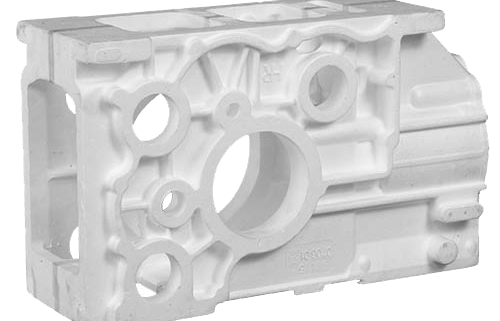Blanks of lost foam casting mold parts are generally formed by forging, and the purpose of forging is to obtain a certain geometric shape, so as to save raw materials, save processing time and reduce cost.
First. Forging temperature
The initial recrystallization temperature of steel is about 727 ° C, but 800 ° C is generally used as the dividing line. Above 800 ° C is hot forging; between 300 and 800 ° C is called warm forging or semi-hot forging, forging at room temperature. It is called cold forging.
Forgings used in most industries are hot forging, warm forging and cold forging are mainly used for forging of parts such as automobiles and general machinery. Warm forging and cold forging can effectively save material.
Second. Forging category
1.Free forging
Refers to a method of processing a forging that uses a simple universal tool or an external force directly applied to the blank between the upper and lower anvil of the forging equipment to deform the blank to obtain the desired geometry and internal quality. Forgings produced by the free forging method are called free forgings.
Free forging is mainly for the production of forgings with small quantities, and forgings are processed by forging equipment such as forging hammers and hydraulic machines to obtain qualified forgings. The basic processes of free forging include upsetting, lengthening, punching, cutting, bending, twisting, misalignment and forging. Free forging is a hot forging method.
2. Die forging
Die forging is divided into open die forging and closed die forging. The metal blank is subjected to compression deformation in a forging die having a certain shape to obtain a forged piece, and the die forging is generally used for producing a part having a small weight and a large batch size. Die forging can be divided into hot forging, warm forging and cold forging. Warm forging and cold forging are the future development directions of die forging, and also represent the level of forging technology.
3. Grinding ring
Rolling ring refers to the production of ring-shaped parts of different diameters by special equipment grinding machine, and also used to produce wheel-shaped parts such as automobile wheels and train wheels.
4. Special forging
Special forging includes roll forging, cross wedge rolling, radial forging, liquid die forging, etc. These methods are more suitable for the production of parts with special shapes. For example, roll forging can be used as an effective preforming process to significantly reduce subsequent forming pressures; cross wedge rolling can produce steel balls, drive shafts, etc.; radial forging can produce large forgings such as barrels and step shafts.
Third. Forgings advantages
Compared with castings, metals can improve their microstructure and mechanical properties after forging. After the hot-formed deformation of the cast structure by the forging method, the original coarse dendrites and columnar grains become the equiaxed recrystallized structure with fine grains and uniform size due to the deformation and recrystallization of the metal, so that the original segregation in the steel ingot Compaction and welding of loose, stomata, slag inclusion, etc., the structure becomes more compact, improving the plasticity and mechanical properties of the metal. The mechanical properties of castings are lower than those of forgings of the same material.
In addition, the forging process can ensure the continuity of the metal fiber structure, so that the fiber structure of the forging is consistent with the shape of the forging, and the metal streamline is complete, which can ensure the good mechanical properties and long service life of the part. Forgings produced by precision die forging, cold extrusion, and warm extrusion are unmatched by castings.
A forging is an object to which a metal is pressed to shape a desired shape or a suitable compressive force by plastic deformation. This force is typically achieved by using a hammer or pressure. The forging process creates a refined grain structure and improves the physical properties of the metal. In the practical use of components, a correct design enables the particles to flow in the direction of the main pressure.
Through forging, the material structure can be fine, the carbide distribution and the streamline distribution are reasonable, the heat treatment performance is improved, and the service life of the mold is improved.
Faced with the main working parts of the mold, especially those parts requiring high heat treatment quality and long service life, such as the convex and concave molds of the die, the forging die, the plastic die, and the cavity of the die-casting die, in addition to the requirement to obtain a certain geometry. The main purpose is to improve the performance of raw materials by forging, in addition to shape, saving raw materials and reducing processing time. Therefore, the mold parts, especially the main working parts, must be forged before processing, and the mold can serve the public for a long time.



